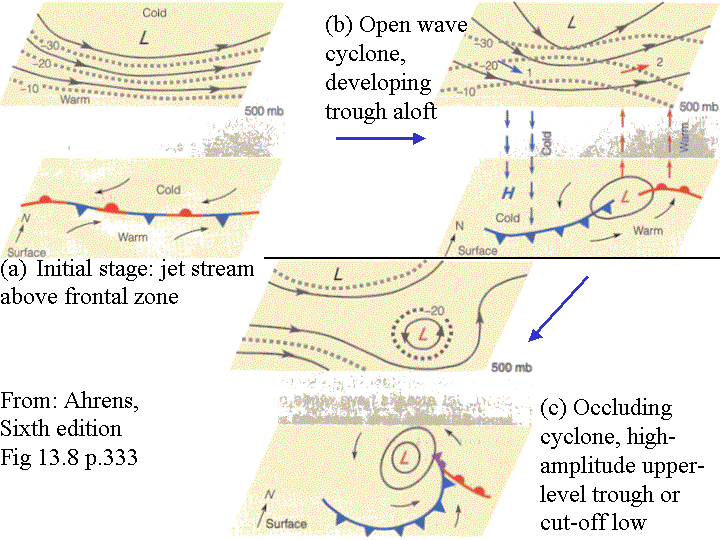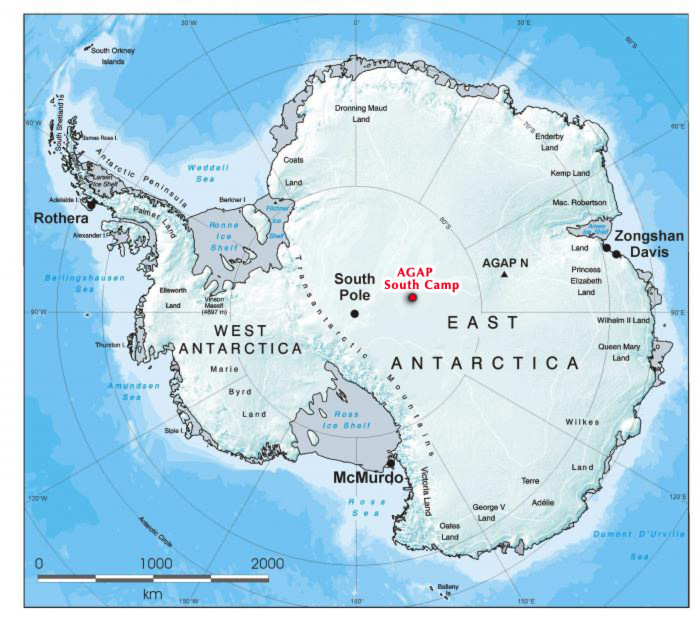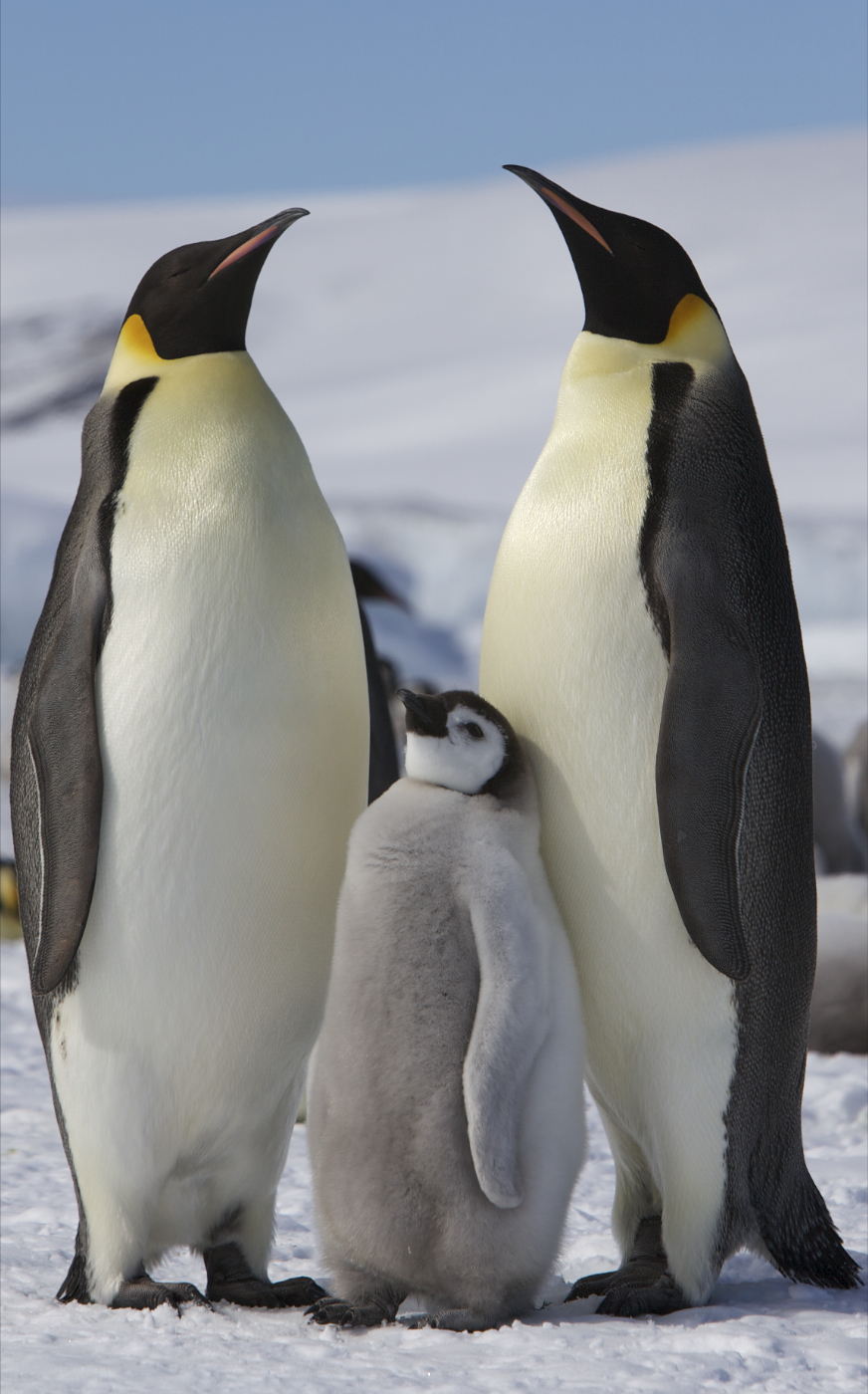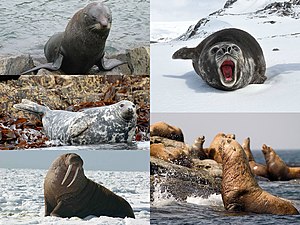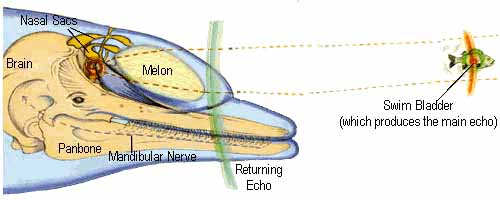Human activities have exerted an incredibly significant influence over the marine sphere; the coastal margins are undoubtedly affected the most by human activities, particularly around river mouths, where there are greater opportunities for ports and commerce. It is impossible to cover the range of human activities detrimental to the marine environment in one blog post, but the documented responses may be better explored.
What is Marine Conservation? What does it mean to 'protect' or to 'conserve?' And what is the marine sphere?
The marine environment is a source of employment, and contributes a substantial amount to the UK economy - the Firth of Clyde supports the incomes of 75% of nearby coastal populations. The social and economic benefits gained from the marine environment are inexorably connected to its quality - therefore it demands maintenance.
Fisheries
The exploitation of marine species has caused large-scale changes in populations of predator and prey species throughout the world's oceans. The secondary effects of fishing are just as diverse as the number of fishing techniques used: consider by-catches of marine mammals, seabirds, fish and invertebrates, or ghost fishing by lost nets. Further, habitat disruption, changes in predator-prey relationships and distruption to the benthic zone. Artisanal fishers in the tropics use poisons such as arsenic, drive netting and blasting which causes direct damage to reefs.
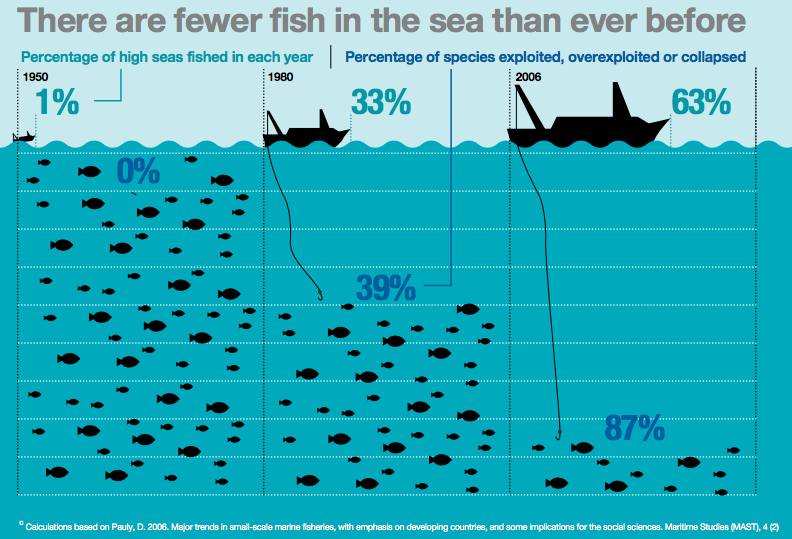
The crisis of over-fishing is well-known, and approached with no-take zones, statutory restrictions on fishing effort and gear used, and replaced in some instances with aquaculture. An example of fish stocks is that of the North Sea Cod, which as declined rapidly from the 1980's to today. In response to that, in the North Sea there are limitations on the amount of allowable sea time per vessel, and catch effort. There are also limits towards catch weight, a minimum mesh size of nets, a max. net size and attempts to zone the ocean.
White alabone, Haliotis sorenseni are highly prized by gourmets and are harvested by divers in the shallow, inshore waters of California - it is a classic example of over-exploitation leading to a massive crash in population, which happened in the early 1970's. The Haliotis sorenseni has shown no signs of recovery, because in common with many marine invertebrates, this species releases eggs and sperm in to the water column. The reproductive success of the females is connected to the distribution, abundance and synchrony of spawning males. However, for the white alabone, the population was exploited to the point where individuals were too dispersed for successful reproduction, leading to a continuous decline.This negatively density-dependant phenomenon is known as the Allee effect.
Biological diversity describes the variety/variability of living organisms and the ecological complexes in which they occur; diversity is defined as the number of different items and their relative frequency.
Going completely the other way is the case of the Sandeels (Ammodytes marinus), which are fundamental for fisheries, are used for human consumption, livestock and as food for salmon fish farms. Its exploitation has been completely unregulated, and seabird breeding in 2004 was the lowest on record, because the birds also depend upon it as a food source. But there has been very little.
Lundy Island is a better case example: it is a designated no-take zone in New Zealand, and once this was implemented in 1977 by 1993 lobster population densities were 8x more dense. Lobster population has increased by 200% in 18 months.
Aquaculture
Britain's first cod farm may be found in Vidlin Voe, Shetlands. Its annual output is aimed at 2,000 tons a year. Three farms were proposed for the Island of Arran, and salmon farming is widespread around the west coast of Scotland, although sales have slumped due to health scares of disease. Whilst it is thought by some that fish farming reduces fishing pressures on wild stocks, there may be implications to wild populations due to escapees. The pollution effects first of all of the hormones injected, alongside parasites and disease all have significant detrimental impacts on wild species when introduced by captive breeds. Fish food requirements such as the sandeel case have proven negative impacts, and the waste/food impacts must all be accounted for.
For this very reason, WWF aims to create stable marine networks that encompass 100 marine protected areas, and recognises that it is equally important to end destructive fishing practice, stop illegal trade in marine wildlife, and reduce land/sea pollution. The Marine Nature Conservation Review in 1987 on behalf of the conservation agencies was established to encourage the provision of protection to species and habitats considered under threat or in decline.
The Ecosystem Approach
Top-down control has been proven ineffective overtime, hence the ecosystem approach. This involves integrating marine conservation with sustainable social and economic goals. Objectives are set for marine nature conservation alongside the full range of human activities and demands. This is a switch from the traditional approach to focus only on rare/threatened features and instead encompass all ecological components of the system, particularly the functional processes that support them. This is what the Marine Nature Conservation Review focusses on, alongside how overarching policy goals could be translated in to action to improve conservation quality.
The Working Group
The Working Group recommends the Government should apply an overarching policy framework of goals, objectives, targets and indicators to apply to all elements of its strategic goals for the marine environment. The Review tested a framework to address marine nature conservation at five spatial levels: the Wider Sea; Regional Seas; Marine Landscapes; Important Marine areas and Priority marine features.
From this, they recommended that the government establishes conservation objectives at each level of the marine nature conservation framework in order to create an ecologically-coherent and representative network of MPA's. Policy and legislation should be introduced as is appropriate, and procedures to assess human impact should be maintained to determine the appropriate strength of response.
The Habitats Directive and Birds Directive (Berne Convention) 1979
This was a European initiative designed to protect biodiversity through the conservation of natural habitats, wild plants and animals. The framework provides for the creation of a network of protected areas across the EU, to be known as Natura 2000 sites: SAC; SPA's and SSSI.



